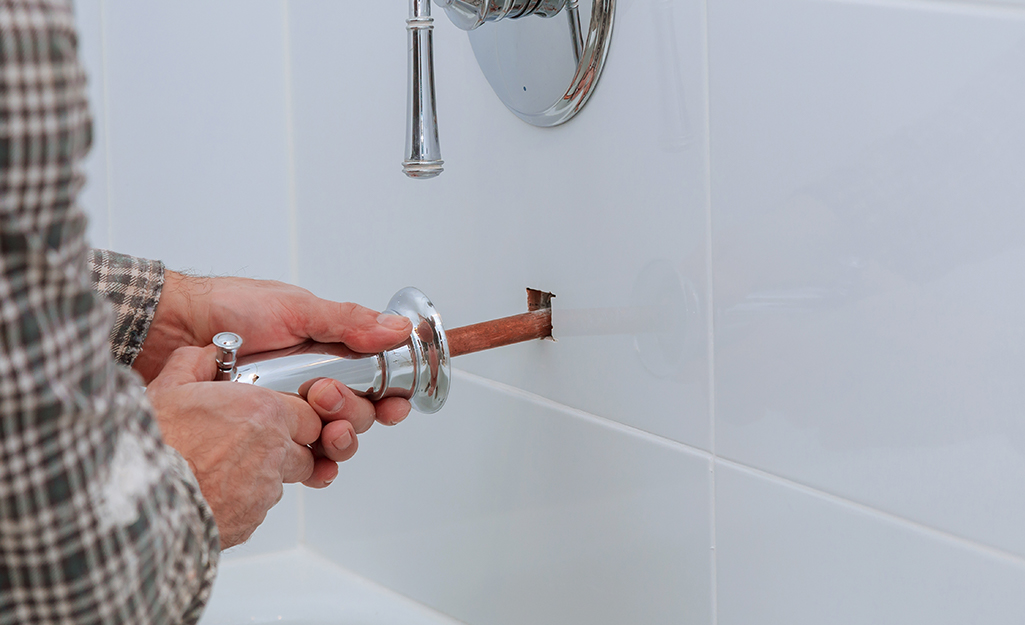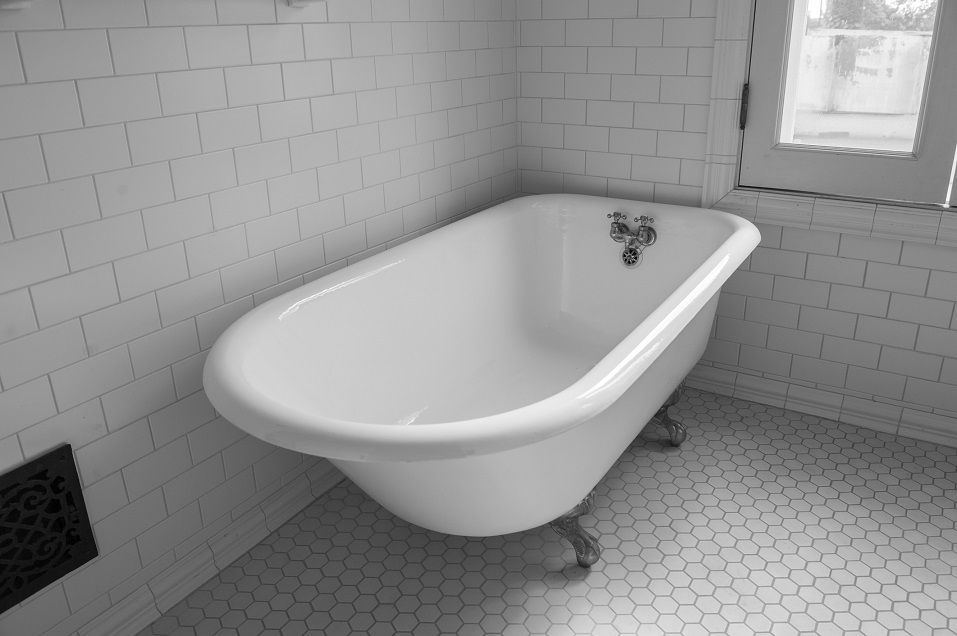DIY Bathtub Installation.
DIY Bathtub Installation.
Blog Article
What're your opinions regarding How to Install a Bathtub?

Installing a tub isn't specifically rocket science, but it does require solid plumbing, carpentry, and also sometimes, tiling skills. Changing an old bathtub with a new one is additionally a reasonably difficult job. If the old bathtub is easily available, the task can relocate speedily; if you need to open up a wall to eliminate the old bathtub and position the brand-new bath tub, the job is much harder. In either situation, the job is within a residence handyman's abilities, although you will need a helper to leave the old tub as well as set in the new one. Make certain you have actually qualified yourself for the job as well as fit trying it. As opposed to hiring a specialist to take control of a halfway-completed task, it is much better to take into consideration using one prior to you start. Chances are you may need a professional plumber to make tube connections.
This short article will help you mount a brand-new bath tub in your bathroom if you have already purchased a brand-new bathtub and also do not require to transform the setup of your previous water supply pipelines.
Your devices and also product checklist must comprise the following:
Getting ready for the Setup
First of all, the sustaining structure provided with the bathroom needs to be fitted (if needed) according to the maker's guidelines. Next, fit the taps or mixer to the bath tub. When fitting the tap block, it is important to see to it that if the faucet includes a plastic washer, it is fitted in between the bathroom as well as the taps. On a plastic bathroom, it is also sensible to fit a supporting plate under the faucets device to stop stress on the tub.
Fit the versatile tap connectors to the bottom of both faucets using 2 nuts and olives (occasionally provided with the bathtub). Fit the plug-hole electrical outlet by smearing mastic filler round the sink outlet opening, and after that pass the outlet via the hole in the bath. Use the nut provided by the producer to fit the plug-hole. Check out the plug-hole outlet for an inlet on the side for the overflow pipe.
Next, fit completion of the flexible overflow pipe to the overflow electrical outlet. Afterwards, screw the pipe to the overflow face which need to be fitted inside the bathroom. Ensure you use all of the supplied washers.
Link the trap to the bottom of the waste outlet on the bath tub by winding the string of the waste outlet with silicone mastic or PTFE tape, and screw on the trap to the electrical outlet. Connect all-time low of the overflow tube in a comparable manner.The bath ought to currently be ready to be suited its last position.
Removing Old Touches
If you need to replace old taps with new ones as a part of your installment, then the first thing you need to do is detach the supply of water. After doing so, activate the taps to drain pipes any water staying in the system. The procedure of removing the existing faucets can be fairly troublesome as a result of the restricted accessibility that is typically the instance.
Use a container wrench (crowsfoot spanner) or a tap device to reverse the nut that connects the supply pipelines to the faucets. Have a fabric prepared for the continuing to be water that will certainly come from the pipelines. Once the supply pipes have actually been removed, utilize the very same tool to loosen up the nut that holds the faucets onto the bath/basin. You will require to quit the single taps from transforming during this process. As soon as the taps have been gotten rid of, the holes in the bath/basin will have to be cleaned up of any type of old securing substance.
Before carrying on to fit the brand-new faucets, compare the pipe links on the old faucets to the new taps. If the old faucets are longer than the brand-new taps, then a shank adapter is needed for the brand-new taps to fit.
Setting up the Tub
Making use of both wooden boards under its feet, place the tub in the needed placement. The wooden boards are practical in evenly spreading the weight of the tub over the location of the boards as opposed to concentrating all the weight onto four small points.
The following goal is to make sure that the bath tub is leveled all round. This can be achieved by inspecting the level and also adjusting the feet on the tub till the level reads degree.
To mount faucets, fit all-time low of the outermost flexible tap adapter to the ideal supply pipe by making a compression join; after that do the same for the various other tap.
Activate the water supply and inspect all joints and brand-new pipework for leakages and also tighten them if necessary. Fill the tub as well as likewise inspect the overflow outlet as well as the typical outlet for leaks.
Finally, deal with the bathroom paneling as defined in the supplier's user's manual. Tiling as well as securing around the bathtub ought to wait until the bathtub has actually been made use of at the very least when as this will settle it into its last placement.
Suitable New Touches
If the tails of the brand-new taps are plastic, then you will certainly require a plastic port to avoid damage to the thread. One end of the connector fits on the plastic tail of the tap and also the various other end gives a link to the existing supply pipes.
If you need to fit a monobloc, then you will certainly call for lowering couplers, which links the 10mm pipe of the monobloc to the conventional 15mm supply pipe.
Next off, place the tap in the placing opening in the bath/basin making sure that the washers are in area in between the tap and also the sink. Protect the tap in place with the supplier supplied backnut. Once the faucet is safely in place, the supply pipelines can be linked to the tails of the taps. The faucets can either be connected by utilizing corrugated copper piping or with typical tap adapters. The previous type should be connected to the faucet ends first, tightening up only by hand. The supply pipes can later on be linked to the various other end. Tighten up both ends with a spanner after both ends have been attached.
Tiling Around the Tub
In the area where the bathroom meets the floor tile, it is needed to seal the accompanies a silicone rubber caulking. This is important as the installation can move sufficient to split a rigid seal, triggering the water to penetrate the wall surface in between the bathroom as well as the tiling, resulting in issues with dampness and also possible leakages to the ceiling below.
You can select from a variety of coloured sealers to blend in your components and fittings. They are offered in tubes and cartridges, as well as can sealing spaces approximately a width of 3mm (1/8 inch). If you have a bigger gap to fill up, you can load it with twists of drenched paper or soft rope. Keep in mind to constantly fill the tub with water prior to sealing, to allow for the motion experienced when the bathtub is in usage. The sealant can break rather early if you do not take into consideration this movement before securing.
Alternatively, ceramic coving or quadrant tiles can be utilized to border the bath or shower tray. Plastic strips of coving, which are easy to use and also cut to dimension, are also quickly available on the marketplace. It is suggested to fit the tiles using water-resistant or water-proof glue and grout.
Bathtub Installation
How Important Is A Bathtub To Your Home?
High-quality baths, showers, and other bathroom updates are necessary when considering a smart investment in your home. It’s a room that you go to every day and one that is constantly being used by guests.The bathroom is one of the top trafficked rooms in a home and also one of the most valuable in terms of home resale.
Install Piping Before Tub
You will be using your existing drain and waste vent system, but pipes required include the hot and cold water supply lines and a pipe leading to a shower head. A mixing valve and shower head are also needed. Air chambers may be required.
Position the Tub
Lower the tub into place so that the continuous flange fits against the wall studs and rests on 1’x4' or 2’x4' supports. Anchor the tub to the enclosure with nails or screws inserted through the flanges into the studs.
NOTE: Remember, bathtubs and shower stalls may require support framing. A bathtub filled with water is extremely heavy, so check building codes and framing support before installing the tub.
Assemble Drain Connections
Assemble the bathtub drain connections by connecting the tub overflow with the tub drain above the trap, not beyond it. The trap will have a compression fitting that screws over the arm of the overflow assembly.
Place a Pipe For the Shower Head
First, locate a brass female threaded winged fitting and attach it to a framing support via a screw or a nail. Then run a pipe up the wall for the shower head. Sweat or solder the other side of the brass fitting to the top of the pipe.
Attaching Hot and Cold Water Lines
Attach your water lines for both hot and cold by sweating these directly into the hot and cold ports of the mixing valve. The mixing valve will be how water enters the tub’s system, not by the pipes themselves.
Install the Spout
Extend a piece of 1/2 inch pipe, or whichever length is specified in the manufacturer’s instructions, for the tub spout. Sweat on a male threaded fitting at the end of the pipe or use a brass nipple of the proper length and a 1/2 inch cap.
NOTE: At this point you should have your rough-in plumbing work inspected before proceeding further.
Check For Leaks
Restore the water pressure and check the drain connection and the supply pipes for any sign of leaking.
estore the Bathroom Wall
Replace the wall with moisture-resistant drywall as a base for your wall covering. Seal the joints between the wall and your new tub with silicone caulk as protection against water seepage.
https://www.berkeys.com/2016/12/02/bathtub-installation-dallas/

I'm very involved in Installing A Bathtub and I am hoping you enjoyed the new entry. Do you know somebody who is truly interested in How to Install a Bathtub? Feel free to promote it. I recognize the value of reading our article about A Step-by-Step Guide to Installing a Bathtub.
Additional Resources Report this page